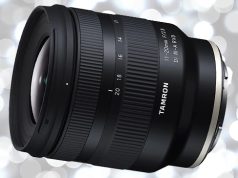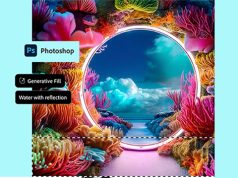
You’ve undoubtedly gotten wind of all the 3D mania that has taken over Hollywood as well as the imaging and consumer electronic worlds in the last couple of years. Whether there’s a true consumer thirst out there for 3D tech or not, manufacturers continue fanning the 3D flames in the hope of creating a real fire.
One obvious trend we saw coming out of 2011 was that many of the major CE manufacturers were rounding out their 3D ecosystems with 3D digital camera releases—a trend that continued at the 2012 CES. Companies like Panasonic and Sony brought 3D TVs and 3D Blu-ray players into the market, so providing their customers with a means to create their own content to check out on those devices only makes sense.
“There’s an opportunity for a 3D ecosystem to develop the same way one developed for high-definition,” Ross Rubin, an analyst with The NPD Group recently explained.
While there’s been quite a few 3D camcorders released in the last year, the pickings are still fairly slim on the digital still camera front, with models like Fujifilm’s Real 3D W3, some of Sony’s newer Cyber-shots, as well as the newer DSC-WX-series cameras (3D sweep panorama), and possibly a new 3D Lumix from Panasonic heading that fairly short list.
While that list is sure to grow in the years ahead, we haven’t seen 3D printing solutions popping up with quite the same frequency.
If you’re currently selling 3D cameras or are considering doing so as the market opens up, you might want to make your customers aware of what their choices are with regard to turning their 3D images into prints. You should also know that you don’t necessarily need a 3D camera to make a 3D print. Some services can do the job with 2D images. Here’s a brief look at some of the current offerings in the 3D print world.
3D Lenticular Prints. Tracer Imaging offers a service that allows consumers to upload 2D images to their site and turn them into a variety of lenticular and 3D prints. The White Plains, New York-based company has also announced partnerships with imaging retailer H&H Color Lab and Fujifilm to offer their services to consumers. More retail partnerships are expected later this year. The prints we’ve eyed are impressive, and they recently added a very neat battery-operated rocking stand to hold and display the motion inherent in the prints. A very cool and affordable introduction to 3D for consumers as the prints can be had for as low as $6.99 and the stand is less than $20. tracer1.com
Kodak 3D Inkjet Printers. Kodak unveiled a 3D inkjet printer at the 2011 CES that enables consumers to both create and print a 3D image. The prints we eyed were interesting, though you need the cyan/magenta 3D glasses to get the effect. To create a 3D image you take a photo of the subject with any digital camera then shift the camera to the right about three inches and take another picture. The software in the printer does the rest and moments later the print is ready for viewing. Kodak is currently offering consumers the opportunity to download their 3D Home Center software that will work with existing Kodak AiO inkjets as well. kodak.com
Fujifilm’s 3D Print Service. Not yet available at U.S. retail, but we are told that news may be forthcoming, Fujifilm currently offers a 3D print service online for users of their Real 3D digital cameras ($499). Again, the results we’ve seen look terrific. Consumers can get 3D prints using the Fujifilm service at SeeHere.com, its photo printing, gifting, and sharing website.
They also sell a 3D viewer (the Real 3D V1) that allows you to upload images captured with their 3D cameras to view in 3D, sans glasses. fujifilmusa.com
3D for Kids. In an effort to bring the 3D experience to children in an easy and engaging manner, DXG USA recently released an inexpensive dual-lens 3D still camera ($80), the DXG-018 3D pocket camera, that comes with a nifty fold-together viewer. The left-and-right images captured by the DXG-018 can be printed out on standard 4×6-inch photo paper, appearing side by side. When the strip of paper is inserted into one of the three included cardboard viewers that ship with the DXG-018, you get the 3D effect.
From the samples we viewed, the 3D was equal to what we all might remember from the old View-Master product. Not bad—and definitely enjoyable for the younger demographic. dxgusa.com
SnapilyPro. A relatively new online entity called SnapilyPro also offers a professional service for lenticular 3D prints that might be worth a look. They can accept 3D images in several formats and offer prints up to 11×17 in size. The site offers 3D cards (no special glasses required) and a morph card (the image morphs to another image as you move the card). The user can also create what they call a “flip” image, which is created by taking two photos that change as the holder flips the card. For instance, the consumer could be presenting a wrapped gift box as the card is tilted (Get it?)
Snapily also offers, for lack of a better explanation, “printed videos” or movie cards, as they are referred to, that appear to use five or six frames to simulate video as you turn the card. Users can upload a short video file, and Snapily software will create the movie card. snapilypro.com
3D Lens for DSLRs. And we just had to mention this unique product from Hong Kong-based Loreo for your customers who may want to shoot 3D images with their DSLR. The Loreo 3D Lens in a Cap comes in models designed for APS-C format and Micro Four Thirds cameras ($20-$30). The lead product in the series is the stereo Lens in a Cap, a 38mm f/11 and f/22, two-element lens in a break-resistant polymer composite housing. The Lens in a Cap series essentially turns the DSLR into a 3D camera.
Once processed, the 3D prints can be viewed with the Loreo Deluxe ($35) or Lite 3D viewers and can also be viewed on computer screens using the Loreo Pixi 3D Viewer. All of these products are basically variations of 3D glasses. loreo.com
Glasses Be Gone. Lastly, if you’re of the school of thought that 3D won’t begin to really take off until manufacturers begin bringing products to market that don’t require glasses to be worn to enjoy the effect, we give you this. Toshiba (toshiba.com) has officially unveiled the 55ZL2, a 3D TV model with a 55-inch screen that doesn’t require the use of 3D glasses. The 55ZL2 will become available in Germany by the end of the year. Stay tuned.





